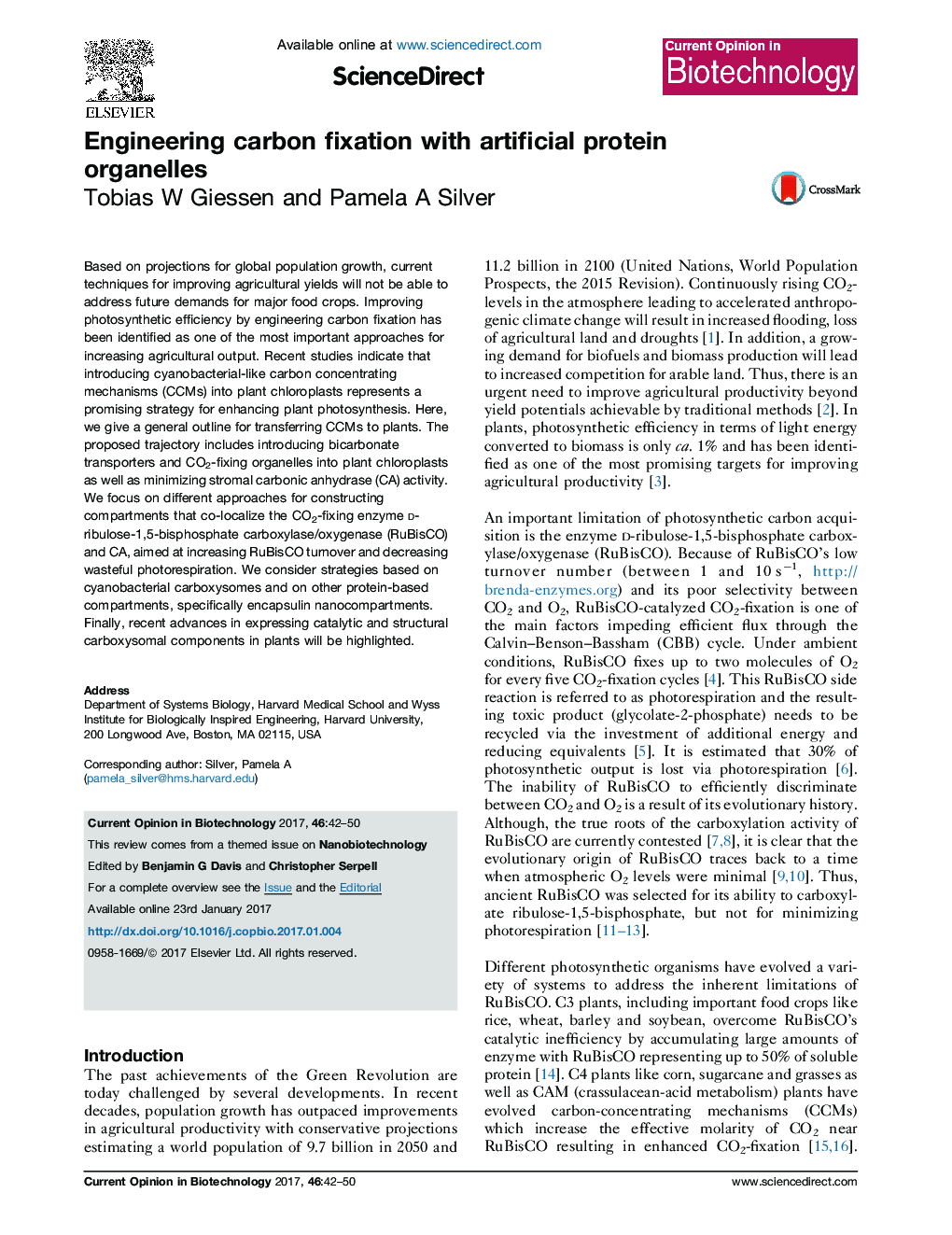| Article ID | Journal | Published Year | Pages | File Type |
|---|---|---|---|---|
| 6451461 | Current Opinion in Biotechnology | 2017 | 9 Pages |
â¢CO2-fixation of crops needs to be improved to meet future agricultural demands.â¢A promising source to exploit are cyanobacterial CO2-concentrating mechanisms (CCMs).â¢Important CCM components include bicarbonate transporters and carboxysomes.â¢Synthetic CCMs may be build using engineered encapsulin-based CO2-fixing organelles.â¢Cyanobacterial RuBisCO and other carboxysome components have been expressed in plants.
Based on projections for global population growth, current techniques for improving agricultural yields will not be able to address future demands for major food crops. Improving photosynthetic efficiency by engineering carbon fixation has been identified as one of the most important approaches for increasing agricultural output. Recent studies indicate that introducing cyanobacterial-like carbon concentrating mechanisms (CCMs) into plant chloroplasts represents a promising strategy for enhancing plant photosynthesis. Here, we give a general outline for transferring CCMs to plants. The proposed trajectory includes introducing bicarbonate transporters and CO2-fixing organelles into plant chloroplasts as well as minimizing stromal carbonic anhydrase (CA) activity. We focus on different approaches for constructing compartments that co-localize the CO2-fixing enzyme d-ribulose-1,5-bisphosphate carboxylase/oxygenase (RuBisCO) and CA, aimed at increasing RuBisCO turnover and decreasing wasteful photorespiration. We consider strategies based on cyanobacterial carboxysomes and on other protein-based compartments, specifically encapsulin nanocompartments. Finally, recent advances in expressing catalytic and structural carboxysomal components in plants will be highlighted.
